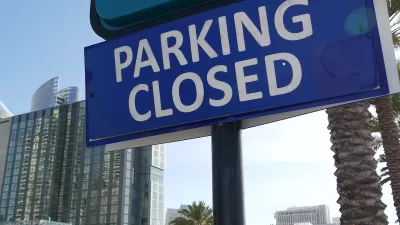The Brookings Institution's "State of Metropolitan America" database (at http://www.brookings.edu/metro/StateOfMetroAmerica/Map.aspx#/?subject=7&ind=70&dist=0&data=Number&year=2009&geo=metro&zoom=0&x=0&y=0 ) contains a wealth of information both on central cities and their metropolitan areas. One issue I was curious about was the economic gap (or lack thereof) between cities and their suburbs.
The Brookings Institution's "State of Metropolitan America" database (at http://www.brookings.edu/metro/StateOfMetroAmerica/Map.aspx#/?subject=7&ind=70&dist=0&data=Number&year=2009&geo=metro&zoom=0&x=0&y=0 ) contains a wealth of information both on central cities and their metropolitan areas. One issue I was curious about was the economic gap (or lack thereof) between cities and their suburbs. In the late 20th century, many central cities (especially in the Northeast and Midwest) fell behind their suburbs economically, becoming the warehouses for the region's poor. Did this continue to be the case in the 2000s?
To answer this question, I looked for information on city household income as a percentage of regional household income. (I note that because cities tend to have smaller households than their suburbs, this measurement tends to make cities look poorer than would a focus on per capita income).* In particular, I was interested in northern cities that had lost population for large chunks of the 20th century, as opposed to constantly-growing cities such as Columbus, Indianapolis, and many Sun Belt cities.
Generally, older central cities fell into two categories. One category was cities, mostly larger cities, that had rebounded from their 20th century difficulties. In these cities, the city/suburb income gap narrowed during the 2000s. For example, in the District of Columbia, urban household income increased from 75% of regional household income in 2000 to 82% in 2009. This pattern was common in the largest northern regions, such as Boston (74% in 2000, 83% in 2009), New York (from 76% to 78%) and even some population-losing cities such as Chicago (77% to 81%) and Pittsburgh (77% to 80%).
A second category is a group that former Albuquerque Mayor David Rusk labelled as cities that have passed at "The Point of No Return"- cities that had, as of 2000,** never closed the economic gap with their suburbs. Rusk labelled ten core cities of major (population of over 1 million) metropolitan areas in this way: Cleveland, Detroit, Birmingham, Buffalo, Baltimore, Hartford, St. Louis, Rochester and Providence. How did these cities do?
The picture here is more mixed. Some dying cities continued to die: Cleveland's median household income nosedived from 61% of the regional average in 2000 to 54% in 2009, Detroit's from 63% to 58%, Hartford's from 46% to 42%. Some other cities sustained smaller losses: Birmingham from 70% to 68%, Baltimore from 60.2% to 59.5%, Philadelphia from 64% to 61%, and Rochester from 61.6% to 60.5%. But two cities that were supposedly past the point of no return sustained income rebounds: St. Louis from 62% of the regional average to 67%, Providence from 63% to 68%. (Buffalo also gained ground by an insignificant margin, from 63.6% to 64%).
A middle group of cities that suffered losses during the late 20th century but were not quite at the "Point of No Return" generally continued to become poorer than their suburbs, though rarely at a rapid rate. Milwaukee's median household income declined from 71% of the regional average in 2000 to 67% in 2009; similar results occurred in Cincinnati (66% to 64%), and Minneapolis (70% to 69%).
So what do we get out of this data? I would say that as a general matter, well-off cities tended to become more well-off: the rebounding cities all had median household incomes at or above 3/4 of the regional household income. These cities were sufficiently appealing to attract more affluent people. By contrast, cities that had "passed the point of no return" mostly continued to lose wealth.
The correlation between population growth and income growth was not 100 percent: some growing cities (like Philadelphia) became poorer relative to their suburbs, and some population losers (like Pittsburgh) did not. Nevertheless, there seems to be at least a modest correlation between population and income: of the eight "Point of No Return" cities that continued to lose income, only two (Philadelphia and Hartford) gained people during the 2000s.
*William Lucy's new book, Foreclosing the Dream, contains a wealth of data using per capita income.
**See David Rusk, Cities Without Suburbs: A Census 2000 Update, at 78-82 (2003 ed.)

Manufactured Crisis: Losing the Nation’s Largest Source of Unsubsidized Affordable Housing
Manufactured housing communities have long been an affordable housing option for millions of people living in the U.S., but that affordability is disappearing rapidly. How did we get here?

Americans May Be Stuck — But Why?
Americans are moving a lot less than they once did, and that is a problem. While Yoni Applebaum, in his highly-publicized article Stuck, gets the reasons badly wrong, it's still important to ask: why are we moving so much less than before?

Using Old Oil and Gas Wells for Green Energy Storage
Penn State researchers have found that repurposing abandoned oil and gas wells for geothermal-assisted compressed-air energy storage can boost efficiency, reduce environmental risks, and support clean energy and job transitions.

Greening Oakland’s School Grounds
With help from community partners like the Trust for Public Land, Oakland Unified School District is turning barren, asphalt-covered schoolyards into vibrant, green spaces that support outdoor learning, play, and student well-being.

California Governor Suspends CEQA Reviews for Utilities in Fire Areas
Utility restoration efforts in areas affected by the January wildfires in Los Angeles will be exempt from environmental regulations to speed up the rebuilding of essential infrastructure.

Native American Communities Prepare to Lead on Environmental Stewardship
In the face of federal threats to public lands and conservation efforts, indigenous groups continue to model nature-centered conservation efforts.
Urban Design for Planners 1: Software Tools
This six-course series explores essential urban design concepts using open source software and equips planners with the tools they need to participate fully in the urban design process.
Planning for Universal Design
Learn the tools for implementing Universal Design in planning regulations.
Heyer Gruel & Associates PA
City of Moreno Valley
Institute for Housing and Urban Development Studies (IHS)
City of Grandview
Harvard GSD Executive Education
Salt Lake City
NYU Wagner Graduate School of Public Service
City of Cambridge, Maryland






























